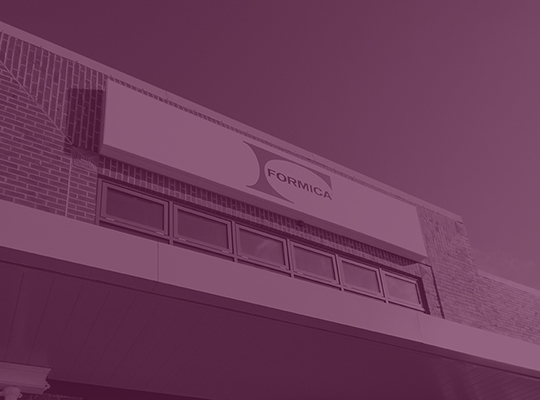
Sur le chemin du développement durable
Dans une démarche de transparence, Formica Group adopte une approche durable en communiquant de manière proactive sur nos performances environnementales et nos projets d'amélioration pour l'avenir.
Surfaces durables avec un contenu renouvelable
Depuis 1913, année où Formica a inventé le premier stratifié haute pression, notre mission a toujours été de créer des produits résistants et durables. La durabilité permet de limiter le remplacement des produits, réduisant ainsi la consommation de ressources et la production de déchets, tout en diminuant notre impact environnemental. Cette approche s'inscrit pleinement dans un modèle d’économie circulaire. De plus, notre matériau principal, le papier utilisé pour fabriquer nos stratifiés décoratifs, provient de sources durables, faisant de lui une matière première renouvelable.
Group Position Paper
Making Real Impact For Less Impact
Notre mission en matière de durabilité reflète l'engagement constant de Broadview, notre société mère. Cela implique d'investir pour minimiser l'impact environnemental de nos procédés et produits, et ainsi réduire notre empreinte. Notre stratégie à long terme repose sur deux axes : remplacer les intrants les plus polluants et améliorer l’efficacité des matériaux et des processus.
En plus de nos actions sur le processus de fabrication, nous explorons en permanence des matières premières plus respectueuses de l’environnement. Bien que le stratifié Formica® soit déjà majoritairement composé de matériaux renouvelables, comme les fibres de bois, Nemho notre centre d'excellence technologique, travaille à augmenter encore cette part en remplaçant les matières d’origine fossile par des alternatives biosourcées.
De plus, la durabilité intrinsèque du stratifié, notamment sa résistance aux rayures, aux impacts et aux produits chimiques, prolonge sa durée de vie et réduit ainsi les ressources nécessaires et les déchets générés.
Nos fournisseurs jouent également un rôle clé dans notre démarche. Nous collaborons activement avec eux pour trouver des solutions permettant d'améliorer notre performance environnementale. Nous offrons également à nos clients des produits durables, contribuant à réduire la nécessité de remplacement fréquent.
Bien que nous ayons encore un impact sur l’environnement, nous travaillons sans relâche pour le diminuer.

Notre approche de la durabilité
Nous faisons partie de la division "Material Technology" de Broadview Holding, aux côtés d'autres marques renommées comme Trespa, Arpa, FENIX, Westag, Homapal et Direct Online Services. La réduction de l’empreinte carbone est au cœur de notre politique de durabilité. Nous sommes convaincus que c'est une mission essentielle pour garantir la pérennité de notre groupe et de ses marques.

Empreinte carbone et systèmes de certification
Réduire l'empreinte carbone du stratifié Formica® est un pilier essentiel de notre démarche de durabilité. Nous sommes convaincus que c'est le bon chemin, à la fois pour l'environnement et pour l'avenir de la marque. Notre démarche consiste à remplacer les intrants les plus polluants et à améliorer l’efficacité de nos processus et la composition de nos produits, tout en maintenant leur durabilité.
Frequently Asked Questions
We use the cradle-to-gate scope for our on-site Life Cycle Assessments (LCAs), because we focus on the stages that are under our control and that we can influence. We are able to improve our processes to make them more efficient and we are continuously working towards using less impactful raw materials. Moreover, for the lifecycle stages that are after our factory gate, we currently don’t have enough data which requires us to make additional assumptions in terms of the disposal of our laminate sheets. Lastly, we are currently waiting on upcoming regulations and a general consensus on the topic of carbon storage benefits of long-lasting products at the end of their lifetime.
Glossary
- Cradle-to-gate: Refers to a partial life cycle assessment where all inputs (raw materials and energy) and outputs (emissions and wastes) are considered from the extraction of raw materials (cradle) to the product is ready to leave the factory (gate). The use and disposal/re-use phases of a product’s life cycle are not taken into account in cradle-to-gate.
- Cradle-to-grave: Refers to the full life cycle assessment, from the extraction of raw materials (cradle) to the transportation, manufacturing, use, and finally disposal or re-use of the product (grave). All inputs (raw materials and energy) and outputs (emissions and wastes) are considered for all the life cycle stages.
Formica® Laminate Environmental Product Declaration (EPD) at formica.info
